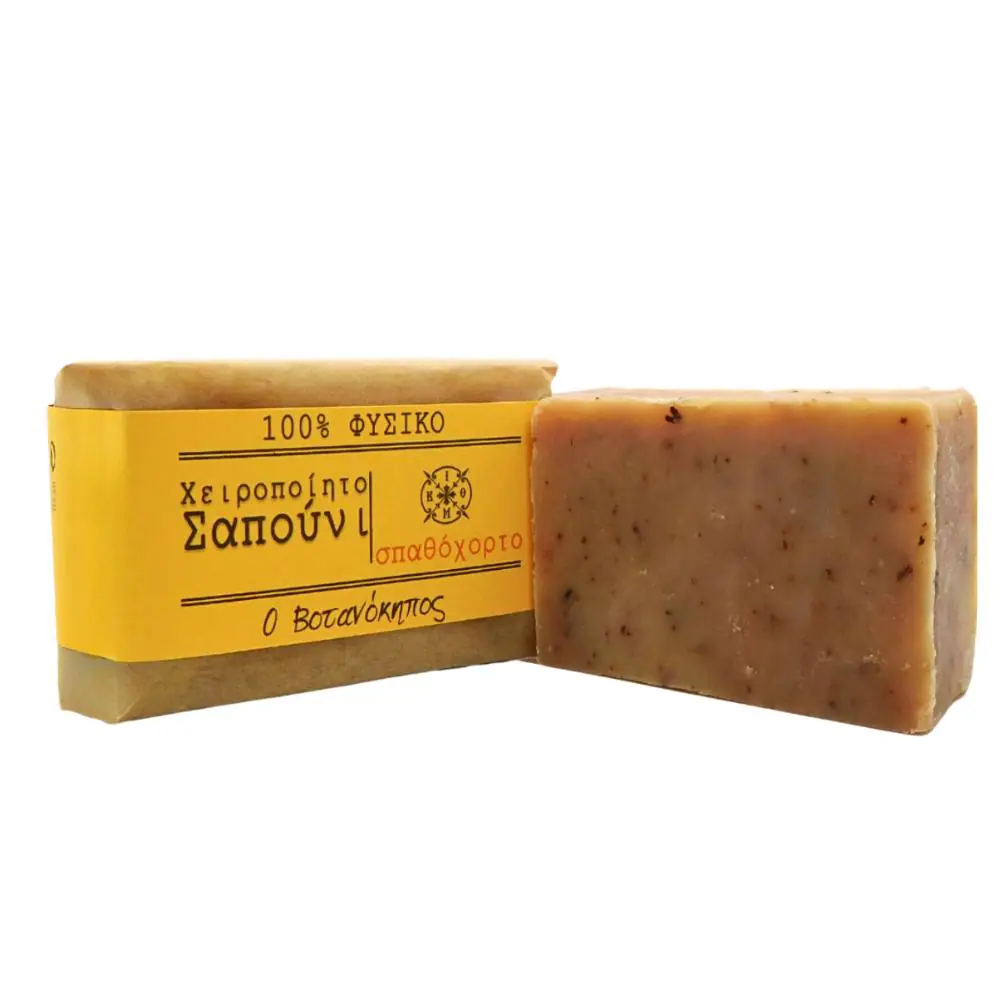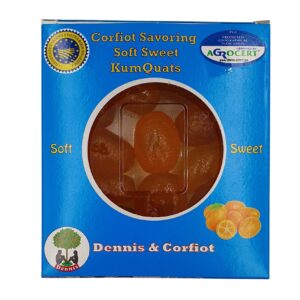Handmade olive oil soap with St. John’s wort flowers
Weight: 90 – 110 g / 100% Natural Product
St John’s wort is a shrubby plant with characteristic yellow flowers that bloom at the top of the plant in summer. When light falls on them, they show translucent spots and black-red dots containing coloured essential oils and resins. Its scientific name is Hypericum perforatum, but it is more commonly known as St John’s wort or Hypericum. Other names include balm, lichen grass, sword grass, spathida, perike and herb of St John the Baptist. It has been known for its healing properties for about 2,500 years.
It was a famous remedy of the ancient Spartans, who used it to heal their wounds after battles, and it was recommended by the healers of the time to treat depression and stomach ulcers. The healing properties of St John’s wort were well known in antiquity. Galen and Dioscorides recommended it as a diuretic, curative, emmenagogue and haemostatic.
St. John’s wort is harvested when it is ripe and the natural fermentation process produces St. John’s wort oil without the addition of preservatives or other substances. The oil in which the plant is extracted must be an excellent extra virgin olive oil with low acidity, so that during fermentation and while exposed to the sun, its acidity does not increase, but above all it acquires a particularly deep red colour. The red colour is due to two substances, hypericin and hyperforin. These substances are thought to act as natural antibiotics, antiseptics, bactericides and anti-inflammatories. The main active constituent of St John’s wort is hypericin, which is found throughout the plant but in higher concentrations in the flowering tips (which lose their properties as they age). It also contains flavonoids (16% in the leaves), xanthones, phenolic acids and traces of essential oils (0.13%).
St John’s wort soap is known for its anti-aging, moisturising and soothing properties. It is considered to be one of the best soaps with strong anti-inflammatory properties. It produces a rich lather and cleanses while moisturising. It is suitable for all skin types, especially dry and tired skin. Hypericum nourishes and rejuvenates the skin, helps heal wounds and burns, and improves skin elasticity and appearance. It can be used on the body and face. The antioxidants and interleukins contained in the chemical composition of Hypericum reduce inflammation, making it a practical choice for those suffering from pain and inflammatory skin conditions. It is healing and can soften the appearance of scars when applied topically.
IMPORTANT NOTE
The above information is not intended to be a substitute for professional medical advice, diagnosis or treatment. Individuals should consult a physician or other qualified health care provider for diagnosis and any medical advice.





Reviews
There are no reviews yet.